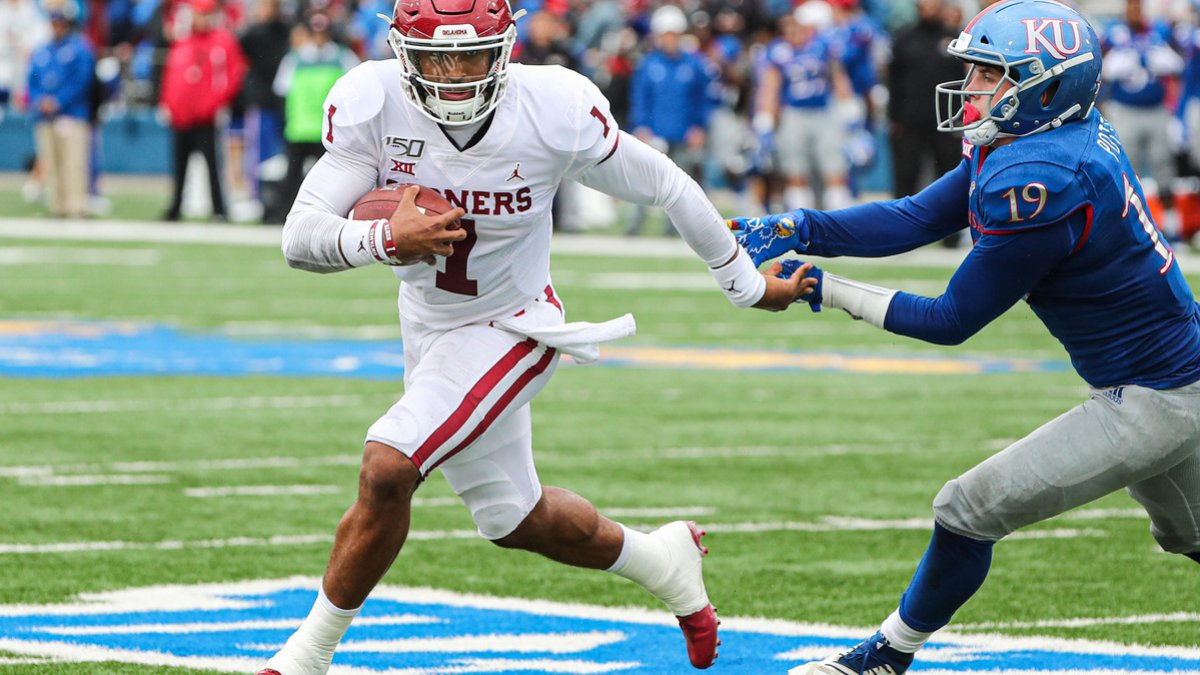While it wasn’t on the level of Joe Burrow’s, quarterback Jalen Hurts saw his draft stock receive a spike after his 2019 grad transfer season in Oklahoma’s air-raid offense. After getting benched for Tua Tagovailoa at Alabama, Hurts came to the Sooners and led them to a Big 12 Championship and College Football Playoff berth. On top of that, he produced himself the second-highest overall grade for a college quarterback at 91.6, behind only Burrow.
The situation Hurts had at Oklahoma really could not have been much better than it was. Excluding quarterbacks, the Sooners had the sixth-most valuable offense in PFF’s wins above average and overall faced a fairly weak slate of defenses until their blowout loss to LSU in the CFP. Hurts had the production this past season that projects well to the NFL as he had the fifth most WAA in college football – and the 19th-most of 2,451 quarterbacks since 2014 – but his style of play says otherwise, pushing him further down the draft board.
Though there is a way for Hurts to succeed at the next level — playing to his strengths without forcing him into an offensive scheme. That said, let’s dive into Jalen Hurts’ strengths and weaknesses as a quarterback and how a team can extract success from that:
Hurts brings running back-esque ability in the run game
Sooners head coach Lincoln Riley integrated Hurts in the run game more than most probably expected. He finished 2019 with the third most designed rushing attempts for a non-running back behind Navy’s Malcolm Perry and Kentucky’s Lynn Bowden Jr. and also finished with the third-most scrambles. Regardless of the play call, if Hurts took off with the ball it more often than not had positive results for the offense. Over 56% of his carries generated positive expected points added, which is 6% above the FBS average for a non-running back.
Jalen Hurts rushing in 2019 with Oklahoma
| Concept | Attempts | Yards per Carry |
| Run-pass option | 54 | 7.4 |
| Read option | 56 | 5.8 |
| Scramble | 59 | 8.5 |
Exclusive content for premium subscribers

WANT TO KEEP READING?
Dominate Fantasy Football & Betting with AI-Powered Data & Tools Trusted By All 32 Teams
Subscribe nowAlready have a subscription? Log in
Exclusive content for premium subscribers

WANT TO KEEP READING?
Dominate Fantasy Football & Betting with AI-Powered Data & Tools Trusted By All 32 Teams
Already have a subscription? Log in



 © 2025 PFF - all rights reserved.
© 2025 PFF - all rights reserved.